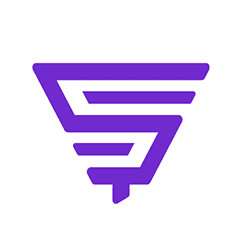Members of the military community (including active service members, veterans, military spouses, and caregivers) make up a large, diverse pool of talent with in-demand skills that are strengthened by their experiences with military service.
Unfortunately, they face significant barriers to finding meaningful, long-term employment and the COVID-19 pandemic has only exacerbated the situation.
USAA research found that although many employers recognize veterans' value to the workforce, 36% say recruiting veterans is more difficult than recruiting civilians, particularly at the recruitment and hiring stages.
But one thing that this pandemic has taught us is that agility is key in all facets of any business. And what better talent pool to look to for agility than veterans?
Veterans are potential candidates who possess qualities like perseverance, creative problem solving, and the ability to work independently, not to mention building and thriving in high-performing teams.
Here are some best practices for enlisting a military hiring strategy to recruit veterans in a way that resonates with them.
Personalized job search experience
Having a personalized candidate experience is table stakes at this point, thanks to the consumer expectation that has been built by the likes of Amazon and other e-commerce companies. But for veterans, this goes beyond just personalizing the career site itself it should include the job search experience.
Many military members have taken alternative paths in terms of their education and career experience, so this must be considered early in their candidate journey.
Many companies incorporate a Military Skills Translator in their job search experience. This gives job seekers the option to enter their Military Occupational Specialty (MOS) code in the search bar to deliver relevant jobs that best align with their skills gained while serving.
Look at Hilton Grand Vacations
In the video below, you can see that when a job seeker visits their career site and navigates to the job search, they are immediately presented with the option to enter their MOS code.
Here you'll notice that the job seeker entered 11B, which is the Army MOS code for Infantrymen. The results immediately populate with jobs that are relevant to their skills and experience.
{% video_player "embed_player" overrideable=False, type='scriptV4', hide_playlist=True, viral_sharing=False, embed_button=False, autoplay=True, hidden_controls=False, loop=True, muted=False, full_width=False, width='1920', height='1080', player_id='59266241819', style='' %}
For more details on the Military Skills Translator, check out our case study with Highmark Health.
Meaningful messaging
Targeting personas is commonplace in recruitment marketing to help guide messaging, creative executions, programmatic recruiting channels, and job descriptions. And it definitely has its place in military hiring.
By tailoring your messaging to your audience, you can spotlight what matters most to them. This can be done by creating targeted microsites and landing pages with lead capture.
Look at FCA's veteran's recruiting program
The video below features a quick tour of their veteran experience.
{% video_player "embed_player" overrideable=False, type='scriptV4', hide_playlist=True, viral_sharing=False, embed_button=False, autoplay=True, hidden_controls=False, loop=True, muted=False, full_width=False, width='1920', height='1080', player_id='59266150028', style='' %}
Some key best practices to highlight are:
- Featured call out on the career site home page: The microsite is not lost in the navigation; it's easily accessible from the home page with clear, distinct creative that targets the military persona.
- Targeted microsite: The Veteran's Recruiting Program has its own dedicated page, complete with relevant images, targeted messaging, veteran-specific awards and accolades, employee stories, company history.
- Veteran-specific talent network: The CTA doesn't lead to the general talent network; it drives to the specific landing page for the Veterans Recruiting Program. This provides the organization with the ability to segment this audience further and provide relevant information.
Consistent communication
Driving candidates to join a talent network allows you to continue nurturing them with consistent and relevant communications through the candidate journey. This not only gives you access to engaged candidates that value your brand but is also your opportunity to set yourself apart from the competition.
- Job Alerts: These relevant notifications are designed to drive candidates back to your experience conveniently.
- Marketing automation: Recruiters can set up email flows based on triggers Ñ like when someone opts into job alerts or abandons their application Ñ or create drip campaigns that roll out over time.
- Repurposing Content: If you already have existing employee stories, blogs, and resources on your career site or targeted landing page that are relevant, push it out to this segment of your network.



